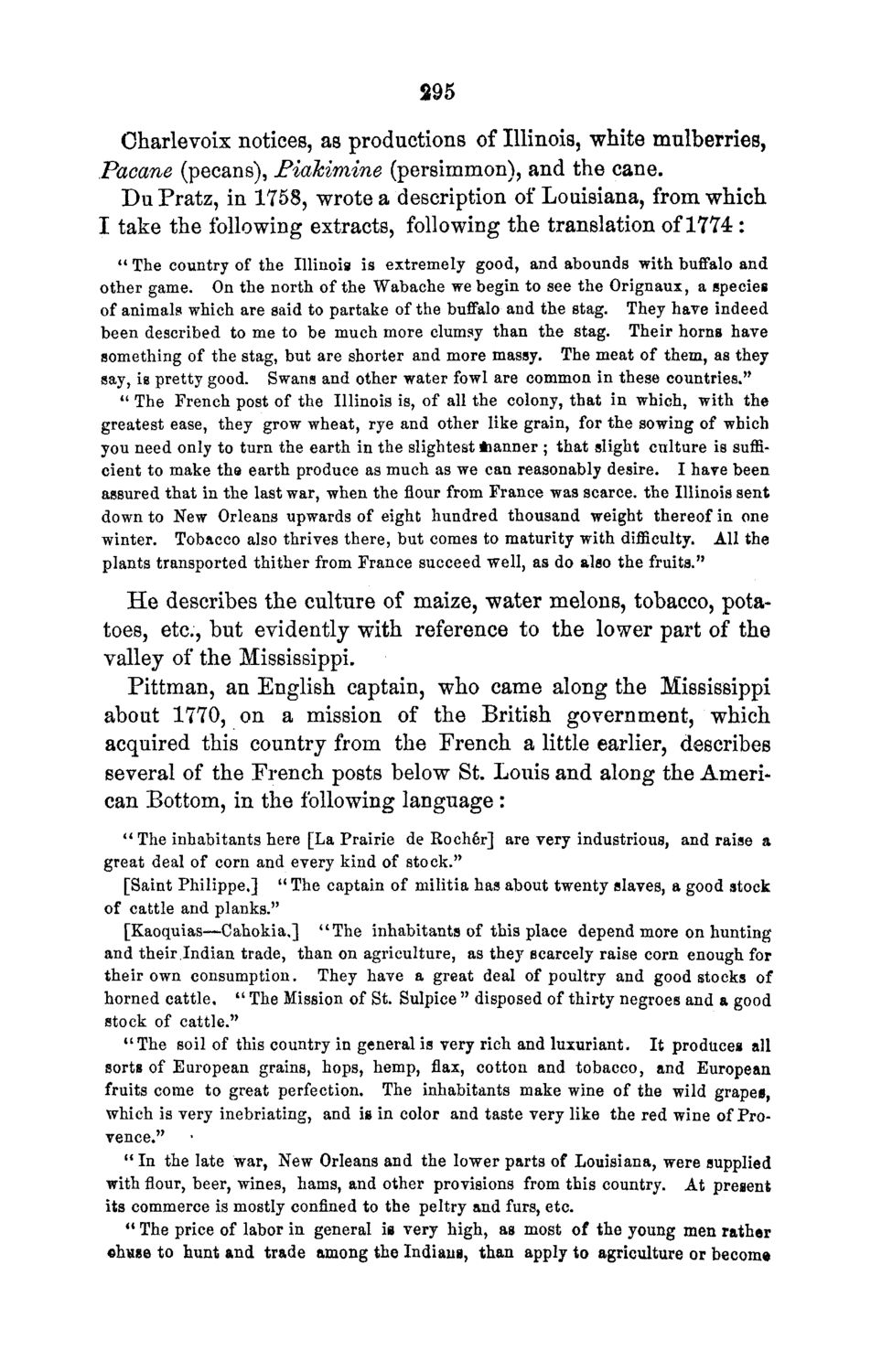| |
| |
Caption: Board of Trustees Minutes - 1868
This is a reduced-resolution page image for fast online browsing.

EXTRACTED TEXT FROM PAGE:
295 Charlevoix notices, as productions of Illinois, white mulberries, Pacane (pecans), FiaJcimine (persimmon), and the cane. DuPratz, in 1758, wrote a description of Louisiana, from which I take the following extracts, following the translation of 1774: " The country of the Illinois is extremely good, and abounds with buffalo and other game. On the north of the Wabache we begin to see the Orignaux, a species of animals which are said to partake of the buffalo and the stag. They have indeed been described to me to be much more clumsy than the stag. Their horns have something of the stag, but are shorter and more massy. The meat of them, as they say, ia pretty good. Swans and other water fowl are common in these countries." " The French post of the Illinois is, of all the colony, that in which, with the greatest ease, they grow wheat, rye and other like grain, for the sowing of which you need only to turn the earth in the slightest tianner ; that slight culture is sufficient to make the earth produce as much as we can reasonably desire. I have been assured that in the last war, when the flour from France was scarce, the Illinois sent down to New Orleans upwards of eight hundred thousand weight thereof in one winter. Tobacco also thrives there, but comes to maturity with difficulty. All the plants transported thither from France succeed well, as do also the fruits." He describes the culture of maize, water melons, tobacco, potatoes, etc., but evidently with reference to the lower part of the valley of the Mississippi. Pittman, an English captain, who came along the Mississippi about 1770, on a mission of the British government, which acquired this country from the French a little earlier, describes several of the French posts below St. Louis and along the American Bottom, in the following language: "The inhabitants here [La Prairie de Rocher] are very industrious, and raise a great deal of corn and every kind of stock." [Saint Philippe.] " The captain of militia has about twenty slaves, a good stock of cattle and planks." [Kaoquias—Cahokia,] u T h e inhabitants of this place depend more on hunting and their.Indian trade, than on agriculture, as they scarcely raise corn enough for their own consumption. They have a great deal of poultry and good stocks of horned cattle, " The Mission of St. Sulpice " disposed of thirty negroes and a good stock of cattle." "The soil of this country in general is very rich and luxuriant. It produces all sorts of European grains, hops, hemp, flax, cotton and tobacco, and European fruits come to great perfection. The inhabitants make wine of the wild grapes, which is very inebriating, and is in color and taste very like the red wine of Provence." " In the late war, New Orleans and the lower parts of Louisiana, were supplied with flour, beer, wines, hams, and other provisions from this country. At present its commerce is mostly confined to the peltry and furs, etc. " The price of labor in general is very high, as most of the young men rather ©huge to hunt and trade among the Indiana, than apply to agriculture or become
| |